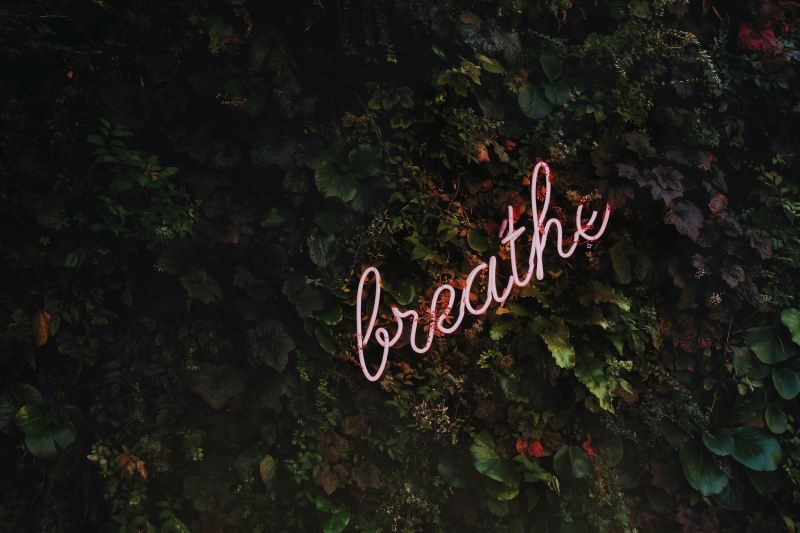
Mindfulness activates the power of your mind and helps you achieve a higher level of productivity, consciousness, focus, and performance. Today, there are distractions everywhere, from phone screens to TV screens and everything in between. If you feel like you’re often getting lost in the distractions and busyness of it all, practicing mindfulness could help you quiet your mind, become undeterred by those distractions, and be more resilient to stress.

What is mindfulness?
Mindfulness refers to the mental state or quality of being conscious and aware of the present, the here and now, where you are, and what you’re doing. Practicing mindfulness is a therapeutic technique that can reduce stress and help you enhance your ability to press pause and access a higher state of nonjudgmental awareness.
Mindfulness is a type of meditation where you typically get better over time. You can practice mindfulness in different ways, including journaling and deep breathing.
It’s exhausting and distracting having an overactive wandering mind, worrying about the past or the future, quickly losing concentration, problem-solving, daydreaming, and thinking negative or ruminating thoughts. In this heightened mindful state, the idea is to bring you back to the here and now, where you’re not overly reactive and can calmly acknowledge your surroundings, thoughts, feelings, and bodily sensations.

What are the benefits of mindfulness?
The advantages of mindfulness aren’t just hype; they’ve been proven in scientific literature. Here are some of the many reasons to give mindfulness a try.
Anxiety, depression, and stress relief
According to the Anxiety and Depression Association of America, generalized anxiety disorder (GAD) affects 6.8 million adults in the U.S., and everyone experiences anxiety and stress from time to time. Plenty of people are also dealing with depression. One impressive meta-analysis looking at multiple studies showed practicing mindfulness is beneficial for depression and anxiety, even without other treatments.
Another study concluded that mindfulness-based stress reduction (MBSR) was true to its name and actually reduced stress and increased general well-being and job satisfaction in the workplace.
Brain health
Your brain is where all this thinking and activity takes place. One study showed that adults who meditate long-term had much lower rates of brain tissue loss, especially in regions of the brain involved with your mood and nervous system. It appears that meditation doesn’t just calm the mind; it could also slow the effects of brain aging.
Another study concluded that first-time meditators who practiced mindfulness meditation for 40 days experienced drastic brain changes, such as the amount of gray matter and the cortical thickness (the cerebrum’s outer layer). Researchers have associated these brain changes with lower depression scores.

Reducing fatigue
Dragging yourself through the day while trying to conserve the little energy you have is challenging. In 2021, the American Psychology Association (APA) conducted a Work and Well-Being Survey of 1,501 adult workers in the U.S. and found that 32% reported emotional exhaustion and 44% reported physical fatigue.
Quieting your mind by practicing mindfulness could improve your sleep so you’re feeling less groggy in the morning. An insightful review showed mindfulness interventions reduced fatigue, stress, and pain and diminished symptoms of sleep disorders for people with cancer. Mindfulness has also been proven to increase levels of melatonin — the sleep hormone produced by your pineal gland that regulates your natural sleep cycle or circadian rhythm. Melatonin has been shown to have anti-cancer properties and improve depression.
Boosting productivity and performance
Mindfulness gives you better-coping strategies and helps you diminish those ruminating thoughts. You’ll be more productive when your mind isn’t running away with every distraction.
Better relationships
Practicing mindfulness can help you foster healthier relationships by improving your emotional regulation, cognitive performance, and sleep. Everyone is less grouchy and easier to interact with after a full night of restful sleep.
An interesting study by clinical psychologists revealed that mindfulness helps you let go of some of your ego and defensiveness. Other people will notice when you’re a calmer, less stressed, and more productive version of yourself, and you might feel more connected with the ones you love.

How to practice mindfulness
So, how do you practice mindfulness? You don’t have to meditate for an hour every day or visit a mountain retreat; even the little things boost your mindfulness, like taking time to pause and breathe when the doorbell or phone rings or stepping outside into the sunlight to breathe in the fresh morning air.
Here are the top ways to practice mindfulness.
Mindful eating
Before you eat, take time to express gratitude and think about the meal you’re eating.
Journaling
Journaling is a way to release some of your emotions and encourage emotional regulation and self-reflection. Spend a few minutes every day to write down your thoughts and feelings or what you’re grateful for that day in your journal.
Deep breathing and meditation
Conscious breathing and meditation pull you out of your sympathetic nervous system’s “fight or flight” response and activate the “stay and play” or “rest and digest” response of your parasympathetic nervous system instead. You can meditate by sitting in a quiet space, closing your eyes, and focusing on taking deep, relaxing breaths. You could also follow a guided breathing meditation.
Focus your attention
Simply bringing your attention to what you’re currently doing increases mindfulness, whether you’re cooking, cleaning, or doing other everyday activities.
Physical activity
Any type of physical activity, including a pleasant stroll, prompts the secretion of endorphins that lift your mood. It also promotes relaxation by decreasing levels of the stress hormone cortisol. Be present when you’re exercising and zone in on the feeling of movement.
Visualization
Close your eyes and visualize your favorite tranquil space, whether it’s a tropical beach under aqua skies or a glistening lake nestled in the trees. Evidence-based visualization involves vividly imagining positive scenarios that prompt your brain to release soothing neurotransmitters like serotonin. Imagine the sights, sounds, and scents, and try to immerse yourself in the scene.
Most importantly, be compassionate and patient with yourself as you train your mind to be still and focused. The more you practice this mindful state, the better you’ll be able to handle stressful situations in the future.
Editors' Recommendations
- How long does pre workout last? How to time your pre-gym routine
- How to deal with depression in men: First, know the signs to look for
- Is olive oil good for you? All about this healthy fat (and how to use it in your kitchen)
- How to do a perfect pushup every time, according to a pro trainer
- Black tea vs. green tea: Which offers more benefits?



